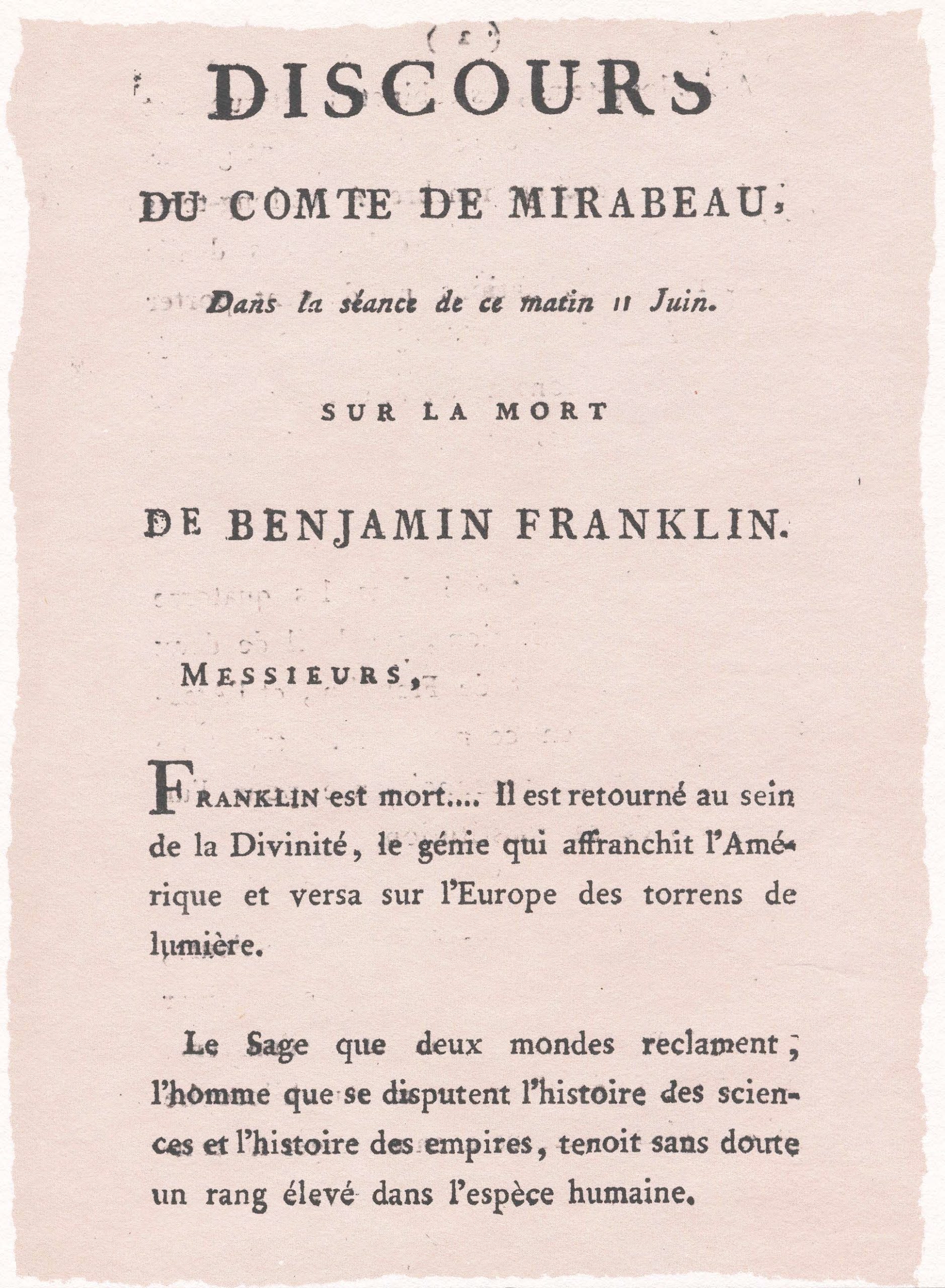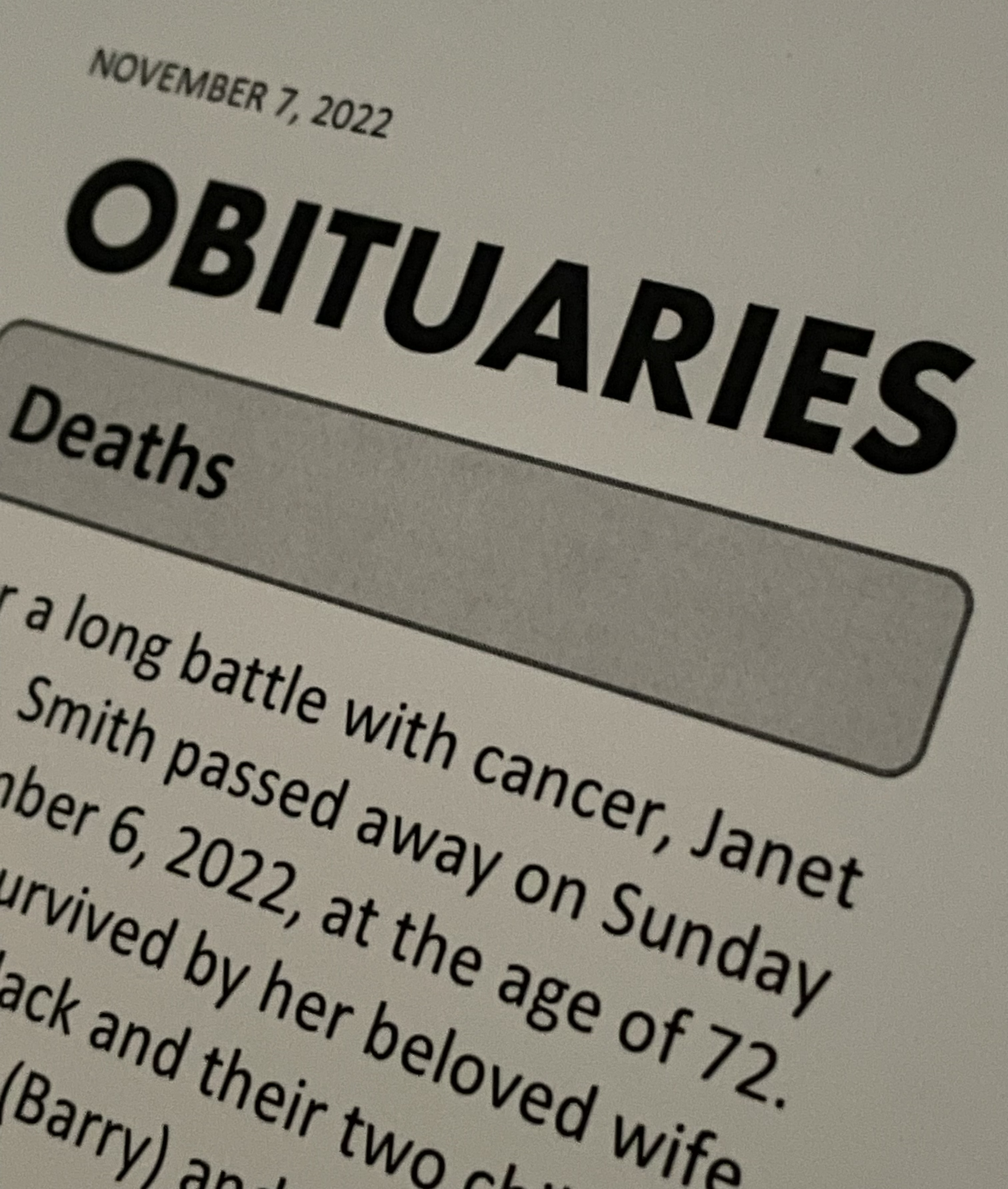9.2 Death Notices & Obituaries
What are Death Notices?

Death Notices are announcements that someone has died. They are typically published in newspapers (print or online), posted in social common areas for public consumption (see Queen Elizabeth II death notice below), and increasingly are appearing in online spaces. Beyond containing the name of the individual who has died and when they died, death notices provide a limited amount of information, such as details on any post-death event to honour the deceased (e.g., funeral, memorial service, or celebration of life — if the event is open to the public — links to virtual broadcasts) and information on the family’s and/or deceased individual’s preferences for flowers or charitable donations.

The posting and/or distributing of hand written death notices date back to the Roman Acta Diurna (meaning “Daily Acts” or “Daily Public Record”) (The history, February 9, 2017) of around 59 BCE (Roos, December 3, 2019; The Origins, October 6, 2020). Printed death notices first appeared in the places colonized by Britain in the 1500s. The evolution of the printing press from the 14th century in Europe, through to the 20th century, made it increasingly easier and less costly to produce longer announcements. This allowed short death notices to transition into longer obituaries and provided more families access to this mode of death announcement (History of obituaries, n.d.; Roos, December 3, 2019).
What are Obituaries?
The term obituary is derived from the Latin word “obitarius” or “record of death” (Szczesniak, n.d.). Its use can be traced back to the early 18th century (Eulogy vs obituary, July 5, 2022). Obituaries are expanded forms of death notices that are published typically in newspapers (print or online), funeral home memorial programs and websites, and dedicated obituary/memorial websites (e.g., everloved.com, forevermissed.com, legacy.com). In addition to providing the details found in a basic death announcement, obituaries include a short biographical sketch of the deceased (Campbell, March 4, 2019). Other details included: date and place of birth (including parent’s names) and death, full name, date and place of marriage, education, career, achievements, accomplishments, contributions, passions and hobbies, and sometimes cause of death (Spector, September 21, 2019).

Both surviving and predeceased family members are also acknowledged, starting with the closest relation (usually the spouse). Obituaries typically conclude with information on any post-death event for the deceased (including web links/addresses if the event will be broadcast online and/or will be available to view after the fact) (How to write, June 23, 2022; Lastly.com., n.d.-b) and special messages, such as notes of thanks (e.g., to hospice or hospital staff), requests for donations and sometimes short communications (e.g., “Mum, you are always in our hearts”, “gone but not forgotten”, or part of poem, song lyric or prayer) (How to write, June 23, 2022).
As they are meant to capture the essence of and pay tribute to the deceased (Writing an obituary, December 13, 2019), the tone of obituaries vary depending upon who the deceased was. They can be formal and traditional, somber and respectful, emotional and touching, light-hearted and humorous (see Kay Heggestad’s and Joe Heller’s obituaries below), or some combination of these. Even more somber or touching obituaries may contain a humorous anecdote about the deceased. According to Spector (September 12, 2019), except in the case of tragic deaths, people are increasingly moving away from more traditional style obituaries towards those that include “humor, flair, wit, [and] personality” (para. 6).
Writing an obituary is a task we all will likely have to undertake in our lives. It is something that has to be produced rather quickly, but requires thought, research and effort. Although not an easy task, the experience of researching (e.g., interviewing bereaved family and close friends about the deceased) and writing an obituary can have therapeutic benefits, for both the person writing the obituary and the grieving family and friends (How to write, June 23, 2022).
Obituary Examples
Click the following links to read a few longer online obituaries:
1 ![]() Warning: Language around cancer that uses wartime rhetoric (e.g., battle, fight, warrior, beat, etc.) can be experienced differently by different people. For some, it may be viewed as acceptable or even helpful, while for others, typically those who are unlikely to or will not “win their battle”, this language can be isolating, uncomfortable and frustrating. To learn more watch the NFB documentary Pink Ribbons Inc.
Warning: Language around cancer that uses wartime rhetoric (e.g., battle, fight, warrior, beat, etc.) can be experienced differently by different people. For some, it may be viewed as acceptable or even helpful, while for others, typically those who are unlikely to or will not “win their battle”, this language can be isolating, uncomfortable and frustrating. To learn more watch the NFB documentary Pink Ribbons Inc.
BCE stands for ‘Before Common Era’. As with its precursor, ‘BC’, these ways of measuring time reflect a Eurocentric ‘Christian’ perspective that does not appropriately consider the multitude of different ways that the notion of time has been understood by cultures globally.

